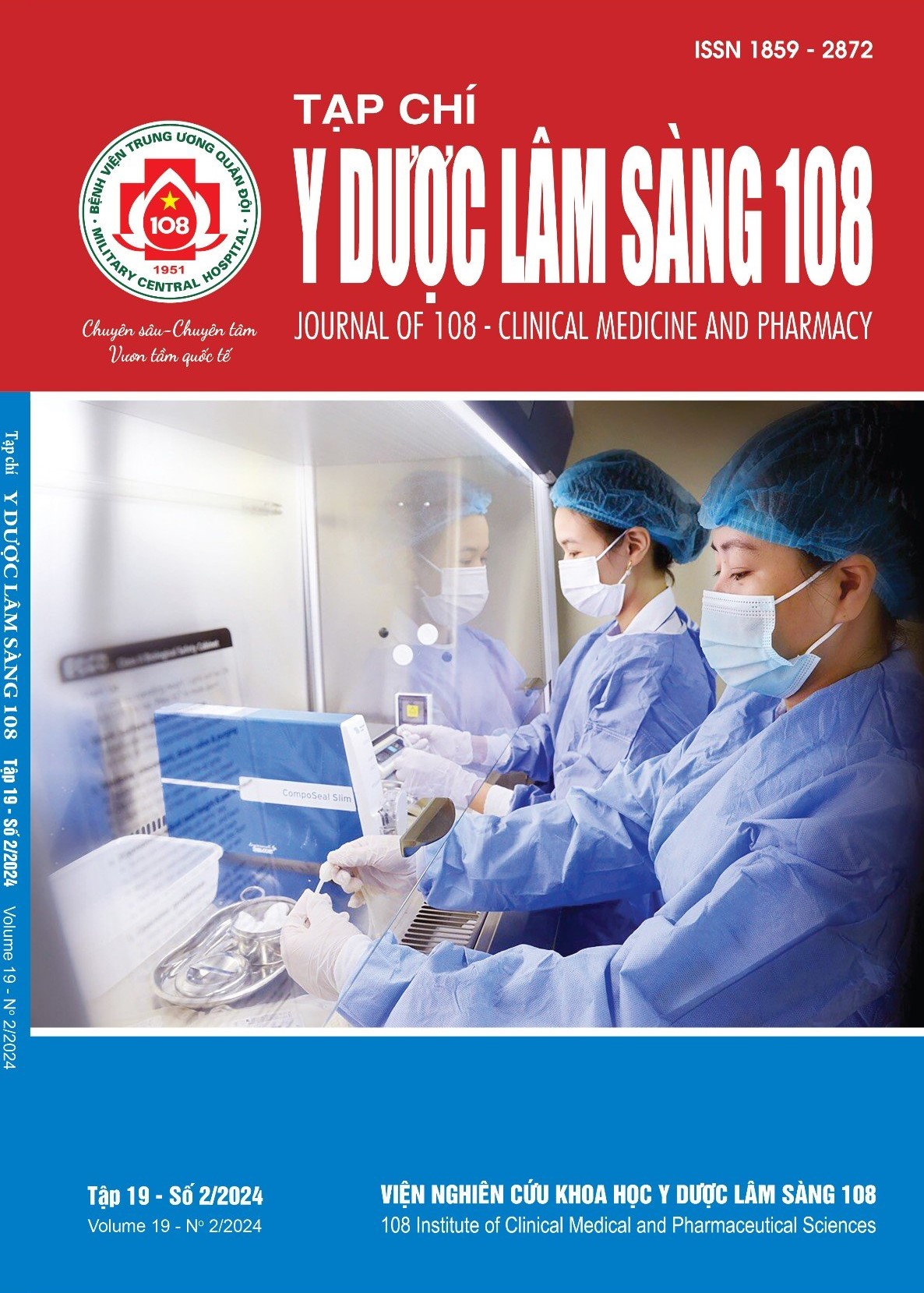Clinical, laboratory data, and treatment outcomes in patients with strongyloides stercoralis infection at University Medical Center Ho Chi Minh City
Main Article Content
Keywords
Abstract
Objective: This retrospective study was carried out to describe the clinical, laboratory data, and treatment outcomes of strongyloidiasis cases at University Medical Center of Ho Chi Minh City to aid in early diagnosis. Subject and method: The data of patients who were admitted to the Gastroenterology Department of University Medical Center of Ho Chi Minh City from January 2018 to December 2022 were examined. The diagnosis of strongyloidiasis relies on identifying larvae in stool and/or the positive of the serologic test without prior treatment. The following information was collected: Clinical manifestation, laboratory test, abdominal imaging, treatment course, and follow-up. Result: A total of 163 patients who satisfied the inclusion criteria were retrospectively reviewed. Their median age was 68 (23-97) and male was predominant (73%). Abdominal pain (63.2%), nausea (50.3%), diarrhea (46%), and fatigue (76.7%) were the four most common symptoms. The immunocompromised state appears to be the risk factor for strongyloidiasis, with 64.4% of cases. Of which, long-term steroids use was the most prominent (23.3%). More than half of the cases (57.1% and 65%, respectively) had hypereosinophilia and hypoalbuminemia. Severe hyponatremia was also a notable feature, accounting for nearly one-fifth of all cases (17.3%). Except in 17 out of 163 cases (10.4%), the response to ivermectin was excellent. Conclusion: Strongyloidiasis should be suspected in patients who are immunocompromised, have multiple chronic diseases, have gastrointestinal symptoms, eosinophilia and/or hypoalbuminemia.
Article Details
References
2. Nutman TB (2017) Human infection with strongyloides stercoralis and other related strongyloides species. Parasitology 144(3): 263-273.
3. Czeresnia JM, Weiss LM (2022) Strongyloides stercoralis. Lung 200: 141-148.
4. Farthing M, Albonico M, Bisoffi Z, Bundy D, Buonfrate D, Chiodini P, Katelaris P, Kelly P, Savioli L, Mair AL (2020) World gastroenterology organisation global guidelines: Management of strongyloidiasis February 2018-compact version.
J Clin Gastroenterol 54(9): 747-757.
5. Mejia R, Nutman TB (2012) Screening, prevention, and treatment for hyperinfection syndrome and disseminated infections caused by Strongyloides stercoralis. Curr Opin Infect Dis 25(4): 458-463.
6. Puthiyakunnon S, Boddu S, Li Y, Zhou X, Wang C,
Li J and Chen X (2014) Strongyloidiasis - an insight into its global prevalence and management.
PLoS Neglected Tropical Diseases 8: 3018.
7. Schär F, Giardina F, Khieu V, Muth S, Vounatsou P, Marti H and Odermatt P (2016) Occurrence of and risk factors for strongyloides stercoralis infection in south-east Asia. Acta Tropica 159: 227-238.
8. Senephansiri P, Laummaunwai P, Laymanivong S and Boonmar T (2017) Status and risk factors of Strongyloides stercoralis infection in rural communities of Xayaburi Province, Lao PDR. Korean Journal of Parasitology 55: 569-573.
9. Lê Đức Vinh (2019) Nghiên cứu thực trạng, một số́ yế́u tố́ liên quan đến nhiễm giun lươn Strongyloides spp và kết quả điề̀u trị bằng ivermectin tại huyện
Đức Hòa tỉnh Long An (2017 - 2018). Luận án tiến sĩ y học, Đại học Y Hà Nội.
10. Centers for Disease Control and Prevention. Parasites Strongyloides. Resources for health professionals [Internet]. Atlanta, GA: Centers for Disease Control and Prevention; 2016 [accessed 2018 Mar 13].
11. Chan AHE, Kusolsuk T, Watthanakulpanich D, Pakdee W, Doanh PN, Yasin AM, Dekumyoy P, Thaenkham U (2023) Prevalence of Strongyloides in Southeast Asia: A systematic review and
meta-analysis with implications for public health and sustainable control strategies. Infect Dis Poverty 12(1): 83.
12. Buonfrate D, Baldissera M, Abrescia F, Bassetti M, Caramaschi G, Giobbia M, Mascarello M, Rodari P, Scattolo N, Napoletano G, Bisoffi Z; CCM Strongyloides Study Group (2016) Epidemiology of Strongyloides stercoralis in northern Italy: Results of a multicentre case-control study, February 2013 to July 2014. Euro Surveill 21(31):30310. doi: 10.2807/1560-7917.ES.2016.21.31.30310.
13. Khieu V, Srey S, Schär F, Muth S, Marti H,
Odermatt P (2013) Strongyloides stercoralis is a cause of abdominal pain, diarrhea and urticaria in rural Cambodia. BMC Res Notes 6: 200. Published 2013 May 20.
14. Krolewiecki A, Nutman TB (2019) Strongyloidiasis:
A neglected tropical disease. Infect Dis Clin North Am 33(1): 135-151.
15. Chowdhury DN, Dhadham GC, Shah A, Baddoura W (2014) Syndrome of inappropriate antidiuretic hormone secretion (SIADH) in strongyloides stercoralis hyperinfection. J Glob Infect Dis 6(1):
23-27.
16. Vandebosch S, Mana F, Goossens A, Urbain D (2008) Strongyloides stercoralis infection associated with repetitive bacterial meningitis and SIADH:
A case report. Acta Gastroenterol Belg 71: 413-417.
17. El Hajj W, Nakad G, Abou Rached A (2016) Protein Loosing Enteropathy Secondary to Strongyloidiasis: Case Report and Review of the Literature. Case Rep Gastrointest Med: 6831854.
18. Wang Y, Zhang X (2023) Gastroduodenal strongyloidiasis infection causing protein-losing enteropathy: A case report and review of the literature. Heliyon 9(7): 18094.
 ISSN: 1859 - 2872
ISSN: 1859 - 2872
